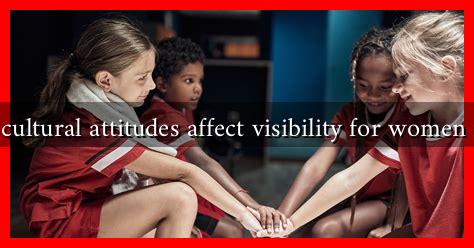-
Table of Contents
How Do Cultural Attitudes Affect Visibility for Women in Sports?
The visibility of women in sports has been a topic of significant discussion and analysis over the years. Cultural attitudes play a crucial role in shaping perceptions, opportunities, and representation of female athletes. This article explores how these attitudes influence visibility, the barriers women face, and the progress being made in the realm of sports.
The Historical Context of Women in Sports
Historically, women have faced numerous challenges in the sports arena, often relegated to the sidelines or dismissed altogether. Cultural norms and stereotypes have perpetuated the idea that sports are predominantly a male domain. This has led to a lack of representation and visibility for female athletes. Key historical milestones include:
- The introduction of Title IX in 1972 in the United States, which mandated equal opportunities for women in education and sports.
- The inclusion of women’s events in the Olympic Games, which began in 1900 but has seen slow progress over the decades.
- Increased media coverage and sponsorship opportunities in recent years, although still lagging behind men’s sports.
Cultural Attitudes and Their Impact on Visibility
Cultural attitudes towards women in sports can be both supportive and detrimental. These attitudes are often shaped by societal norms, media representation, and historical context. Here are some ways cultural attitudes affect visibility:
- Media Representation: The portrayal of female athletes in the media often emphasizes their appearance over their athletic achievements. A study by the Women’s Sports Foundation found that only 4% of sports media coverage is dedicated to women’s sports.
- Sponsorship and Investment: Cultural perceptions can influence sponsorship opportunities. Brands may be less likely to invest in women’s sports due to the belief that they attract fewer viewers, despite evidence suggesting that women’s sports are gaining popularity.
- Role Models: The lack of visible female role models in sports can discourage young girls from pursuing athletics. When women athletes are celebrated and promoted, it can inspire the next generation to participate.
Case Studies: Progress and Challenges
Several case studies illustrate the impact of cultural attitudes on women’s visibility in sports:
- Serena Williams: As one of the most successful athletes in history, Williams has faced both admiration and criticism. Her visibility has challenged cultural norms, but she has also been subjected to scrutiny that her male counterparts often escape.
- The U.S. Women’s National Soccer Team: Their fight for equal pay has brought attention to the disparities in funding and support for women’s sports. Their success on the field has increased visibility and sparked discussions about gender equality in sports.
- Women’s Sports Network: Initiatives like the Women’s Sports Network aim to provide a platform for female athletes, showcasing their talents and increasing visibility through dedicated media coverage.
Statistics Highlighting the Visibility Gap
Statistics reveal the stark contrast in visibility between male and female athletes:
- According to a report by the Women’s Sports Foundation, only 20% of sports coverage is dedicated to women’s sports.
- In 2020, the NCAA reported that women’s sports received only 28% of total athletic budgets.
- Research from the University of Southern California found that female athletes receive only 4% of sports media coverage, despite making up 40% of all athletes.
Conclusion: The Path Forward
While cultural attitudes have historically hindered the visibility of women in sports, progress is being made. Increased media coverage, advocacy for equal pay, and the rise of female role models are all contributing to a shift in perception. To further enhance visibility for women in sports, it is essential to:
- Encourage media outlets to provide equitable coverage of women’s sports.
- Support initiatives that promote female athletes and their achievements.
- Challenge stereotypes and cultural norms that limit women’s participation in sports.
In summary, cultural attitudes significantly impact the visibility of women in sports. By addressing these attitudes and advocating for change, we can create a more inclusive and equitable sports landscape for future generations.
For more information on the challenges and progress of women in sports, visit the Women’s Sports Foundation.

